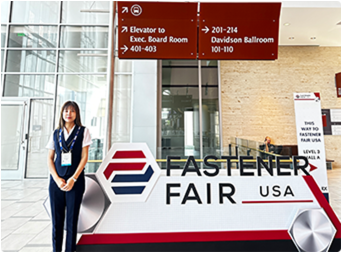Dec . 26, 2024 10:12 Back to list
Understanding the Use and Installation of Retrofit Anchor Bolts for Structural Integrity
Retrofit Anchor Bolts Enhancing Structural Integrity and Safety
In the realm of civil engineering and construction, the significance of robust anchoring systems cannot be overstated. Among these, retrofit anchor bolts have emerged as a vital component for enhancing the stability and safety of existing structures. As buildings age, their capacity to withstand various forces—such as seismic activities and environmental loads—can deteriorate. To address these issues, retrofit anchor bolts provide an effective solution to reinforce structural integrity without requiring a complete overhaul of the original design.
What are Retrofit Anchor Bolts?
Retrofit anchor bolts are specialized fasteners used to stabilize and secure components of older structures that may not have been built to current standards or capable of handling modern loads. These anchors are designed to be installed into existing concrete or masonry elements, providing additional support to critical areas such as beams, columns, and walls. The modernization of anchor systems is particularly crucial in regions susceptible to earthquakes, where the seismic resilience of a building can significantly affect its safety and longevity.
The Importance of Retrofitting Structures
As urban environments continue to evolve, it is not uncommon to encounter structures that were built decades ago, often without consideration for modern building codes and safety requirements. Over time, changes in usage, load demands, and environmental conditions can tax these older infrastructures. Retrofitting with anchor bolts not only extends the lifespan of these buildings but also enhances the safety of occupants by mitigating the risks associated with structural failures.
Types of Retrofit Anchor Bolts
There are several types of retrofit anchor bolts, each catering to different structural needs. Common varieties include
1. Epoxy-Set Anchor Bolts These bolts are set into drilled holes using a high-strength epoxy resin. This method provides excellent load capacity and is particularly effective for attaching new structural elements to existing concrete.
2. Sleeve Anchor Bolts Designed to provide shear and tension resistance, sleeve anchor bolts expand within the drilled hole upon installation. They are suitable for non-cracked concrete and can be easily removed if needed.
retrofit anchor bolts

3. Chemical Anchors Similar to epoxy-set bolts, chemical anchors rely on various chemical adhesives to bond with the surrounding material. They allow for deeper embeddings, providing higher load capacities and resistance to environmental factors.
4. Post-installed Mechanical Anchors These include a variety of mechanical fastening systems that offer instant load-bearing capacity, making them a preferred option in time-sensitive projects.
The Retrofitting Process
The retrofitting process typically begins with a comprehensive assessment of the structure to identify critical areas requiring reinforcement. Engineers will analyze load distribution, potential weaknesses, and, if necessary, conduct non-destructive testing to evaluate the condition of existing materials. Following this assessment, the appropriate retrofit anchor designs are selected, and installation plans are devised.
Installation generally involves drilling into the existing concrete to the required depth, cleaning the holes to remove debris, and placing the anchor bolts according to manufacturer specifications. Special attention is given to ensuring that the bolts are aligned correctly and installed with the right torque to guarantee optimal performance.
Benefits of Retrofit Anchor Bolts
The advantages of incorporating retrofit anchor bolts into structural reinforcement projects are manifold. First and foremost, they enhance the resistance of buildings to seismic forces, reducing the risk of damage during earthquakes. Secondly, they prolong the life of existing structures, which is often more cost-effective than complete demolition and rebuilding. Furthermore, the installation process generally causes minimal disruption to building occupants, allowing for continued use of the facility during retrofitting.
Conclusion
In conclusion, retrofit anchor bolts represent an essential strategy in maintaining and upgrading the safety and resilience of aging structures. As our built environment continues to age, the importance of such innovative solutions cannot be overlooked. By embracing the technology and techniques behind retrofit anchor bolts, civil engineers can ensure that buildings not only meet current safety standards but also stand resilient in the face of future challenges. Investing in retrofitting not only preserves our architectural heritage but also champions the ongoing commitment to public safety in our communities.
-
The Ubiquitous Reach of DIN934 in Application Realms
NewsMay.16,2025
-
Exploring Different Bolt Types
NewsMay.16,2025
-
Cracking the Code of Sleeve Anchor Mastery
NewsMay.16,2025
-
Clamp Design Principles,Types and Innovations
NewsMay.16,2025
-
Artistry Inspired by the Humble Anchor Bolt
NewsMay.16,2025
-
A Deep Dive into Screw Types
NewsMay.16,2025


